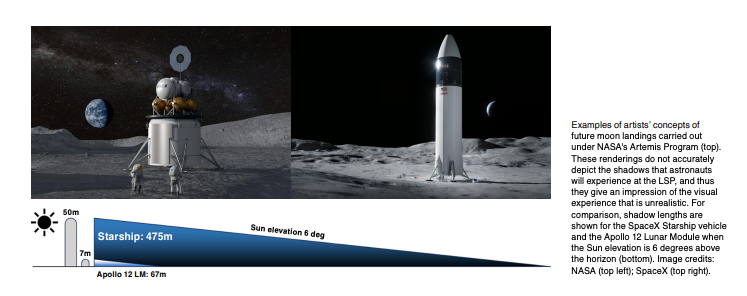Excerpt: “Humans are returning to the Moon—this time, to stay. Because our presence will be more permanent, NASA has selected a location that maximizes line-of-sight communication with Earth, solar visibility, and access to water ice: the Lunar South Pole (LSP). While the Sun is in the lunar sky more consistently at the poles, it never rises more than a few degrees above the horizon; in the target landing regions, the highest possible elevation is 7°. This presents a harsh lighting environment never experienced during the Apollo missions, or in fact, in any human spaceflight experience. The ambient lighting will severely affect the crews’ ability to see hazards and to perform simple work. This is because the human vision system, which despite having a high-dynamic range, cannot see well into bright light and cannot adapt quickly from bright to dark or vice versa. Functional vision is required to perform a variety of tasks, from simple tasks (e.g., walking, operating simple tools) through managing complex machines (e.g., lander elevator, rovers). Thus, the environment presents an engineering challenge to the Agency: one that must be widely understood before it can be effectively addressed.”
40,280 Entries
41 Added in Past 24 Hours

